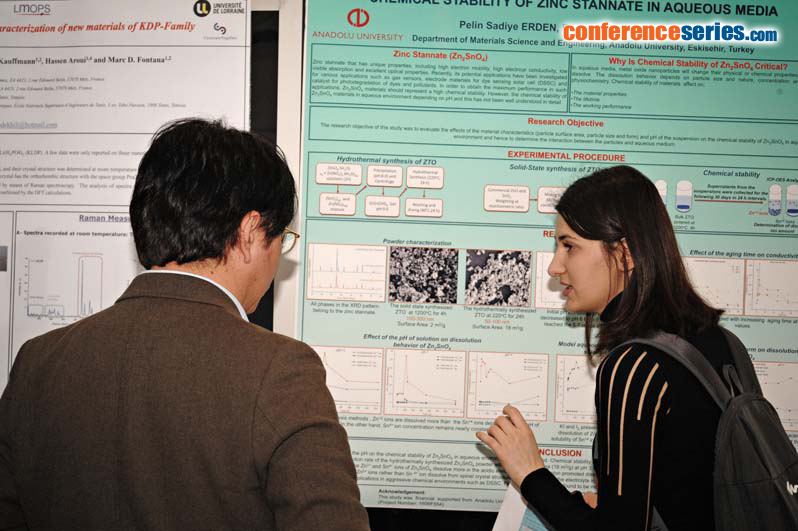
Sadiye Pelin Erden
Anadolu University, Turkey
Title: Chemical stability of zinc stannate in aqueous media
Biography
Biography: Sadiye Pelin Erden
Abstract
Zinc stannate that has unique properties, including high electron mobility, high electrical conductivity, low visible absorption and excellent optical properties. Recently, its potential applications have been investigated for various applications such as gas sensors, electrode materials for dye sensing solar cell (DSSC) and catalyst for photo-degradation of dyes and pollutants. In order to obtain the maximum performance in such applications, Zn2SnO4 materials should represent a high chemical stability. However, the chemical stability of Zn2SnO4 materials in aqueous environment depending on pH and this has not been well understood in detail yet. Therefore, the research objective of this study was to evaluate the effects of the material characteristics (particle surface area, particle size and form) and pH of the suspension on the chemical stability of Zn2SnO4 in aqueous environment and hence to determine the interaction between the particles and aqueous medium. In this study, zinc stannate particles with different surface area and particle size were synthesized by solid state reaction and hydrothermal methods. After the Zn2SnO4 powders were synthesized, Zn2SnO4 suspensions in aqueous environment were prepared at pH 3 and pH 9 by adding HCl acid and NaOH base solutions to the deionized water, respectively. Supernatants from the suspensions were collected for the following 30 days in 24 hours intervals. Zn+2 and Sn+4 ion concentrations were determined by ICP-OES. The ICP-OES results showed that cations of Zn2SnO4 dissolve more in the acidic side than the basic one. In addition, dissolution rate of the hydrothermally synthesized Zn2SnO4 powder with higher surface area (18.053 m2/g) at pH 3 was much faster than that of the solid state synthesized Zn2SnO4 powder with relatively lower surface area (1.99 m2/g).


